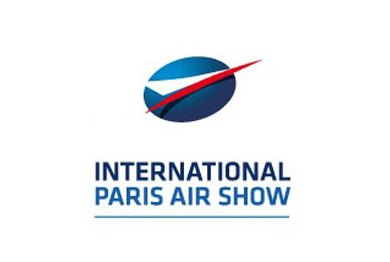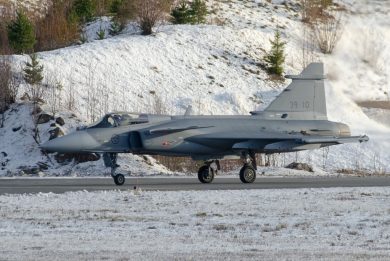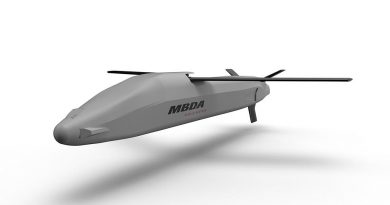
Swedish Air Force increases its strength
The yearly meeting of the Swedish Air Force Fan Club took place one month after the Defence Commission presented its final report, “Defensive power – Sweden’s Security Policy and the Development of its Military Defence 2021-2025” to Minister of Defence Peter Hultqvist (click here for EDR News on that subject).
One more key event took place on January 1st 2019, the split of the services HQs, the Air Force HQ having moved to Uppsala. This led the Air Force to increase up to 4,600 people permanently employed, Maj.Gen Mats Eric Helgesson, Chief of the Swedish Air Force underlined at the meeting held in Paris at the eve of the opening of the 53rd edition of the Paris Air Show.
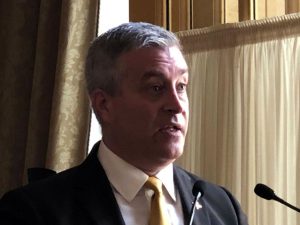
He stressed the importance of maintaining a balanced Air Force, with all those elements that allow it to operate on a wide span of possibilities: “we have one airborne early warning squadron and one signal intelligence squadron, limited assets, but the capability is there and we must not lose it,” as it would take decades to get them back he said.
Stressing the spiral approach adopted for the development of the Gripen C/D, which is currently flying with the MS20 Block 1.2 software, he said that the same scheme will be followed also for the Gripen E.
The transport fleet is still relying on C-130H, although Sweden is part of the Heavy Airlift Wing together with 11 other nations, the Swedish Air Force flying around 550 hours per year with the Wing C-17s. These will soon receive an upgrade. “It will mostly be aimed at replacing their avionics,” Brig.Gen. Ingela Mathiasson, Director Air and Space Systems Division at FMV, explained, “as structurally the aircraft are still in good shape and engines do not need replacement.”
A subject already mentioned at the 2018 gathering in London is that of the Swedish Air Base system and dispersed operations. The three Groups of Air Bases are made of a main base, a couple of side bases and a couple of auxiliary/reserve bases, which allow dispersing assets in case of an attack against Sweden. “Our dispersed sites need an 800 meters-long runway to operate Gripens, with a light logistic element led by a couple of professional the remaining personnel being conscripts,” some involved in close protection while a small number would carry on the aircraft turnaround, rearming and refuelling needing around 10 minutes, Gen. Helgesson said. The Swedish Air Force got back the capacity to deploy Air Traffic Control elements on those strips, although sometimes this is limited to a man with radio and tablet, “however we want to be able to operate without ATC on the ground, and I look forward to get this capability ASAP,” the Swedish Air Force Chief said.
He stressed the increased activities over the Baltic Sea, not only by Russian but also by neighboring countries, which led him to talk about cooperation with those, stressing the very close relationship with the Finnish Air Force, “with which not only we train but we also do crisis planning.” Sweden is increasingly training with the international community, the ACE19 exercise having just been concluded (click here to read the EDR News on the exercise).
After having underlined the Swedish concept of Total Defence, which involves all citizens in the age between 16 and 67, the military being only one part of it, Maj.Gen. Helgesson defined the future battle space with five “C”: cluttered, congested, contested, connected and constrained, in short with another word starting with the same initial, complicated.
Commenting on the Defence Commission document, he underlined how the document stresses the deterioration of the situation in the vicinity of Sweden and the strength of Russia. The strength of the Swedish Armed Forces will thus be increased by 50%, from 60,000 to 90,000, augmenting the intake of conscripts from the current 4,000 up to 8,000 per year. “the largest enhancement of the Armed Forces since 1940,” he underlined.
Coming to the effect on his service, the Air Force Chief highlighted a number of points:
- Six Gripen squadrons will remain
- Gripen C/D will remain operational in parallel during the introduction of the Gripen E, with probably three squadrons of each type
- One C3 battalion will be added
- The ability to disperse Air Force assets on the ground and to protect them will be increased
- Ground and air based new sensors will be acquired
- The Air Force will buy more air-to-air and air-to-ground long range missiles
- A new Air Force Wing (base), the Upplands Flygflottilj (F16) will be established
Asked about future investments in equipment, Brig.Gen. Mathiasson and Maj.Gen. Helgesson said that considerations on a further upgrade of the Gripen C/D being under study, probably involving sensors while new block upgrades to the mission system will also be developed, the first Gripen E being expected to be operational in 2021, “the decision of which Squadron will receive it has been taken but is not yet official,” the Air Force Chief said. As for the MALE UAS, selection is still underway. Two aircraft are obsolete, the Saab 105 training aircraft, SK 60 in service wording, and the A109 light helicopter. No money will be spent on the SK 60 except for replacing the radios, due to new regulations, the FMV representative said. “We are looking for a basic trainer, a propeller aircraft, and then we will exploit out two-seater Gripens,” Gen. Helgesson said, saying that the T-X, which he flew, is an excellent trainer but is not currently part of the Swedish plans. As for the A109 Gen. Mathiasson said that an analysis is underway to figure out if it is worth investing for stretching its operational life or if a replacement should be planned.
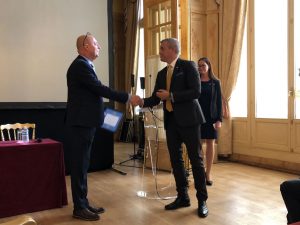
Hosted at the Cercle National des Armées in Paris, the meeting also marked a handover at the chairmanship of the Swedish Air Force Fan Club: Major Matts Gylander will retire from active service in 2020, prior the next meeting planned for 19 July in London, the Paris gathering being the right opportunity to introduce his successor, Mrs. Louise Levin, Chief Public Affairs Officer of the Swedish Air Force. Thank for all Matts!
Photos by Paolo Valpolini

